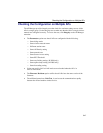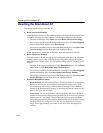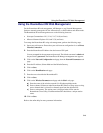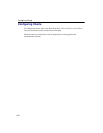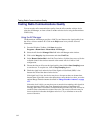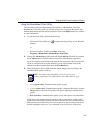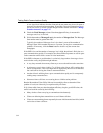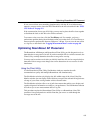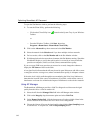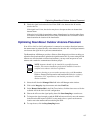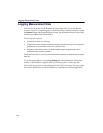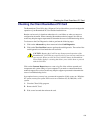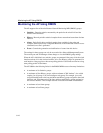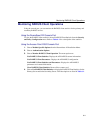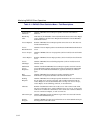
6-5
Optimizing RoamAbout AP Placement
If one or more clients are transmitting simultaneously with the AP in an infrastructure
network, you may need to lower the RTS Threshold on the AP as described in the “RTS/
CTS Protocol” on page 2-9.
If the concentration of users per AP is high, you may need to place the APs closer together
to distribute the load, or add APs to the wireless network.
To measure values over time, click the Test History tab. For example, you have a
performance problem during the mid-afternoon but not at other times. Use Test History to
measure wireless performance between 2:00 pm to 3:00 pm. You can save the test results
to a log file, as described in the “Logging Measurement Data” section on page 6-8.
Optimizing RoamAbout AP Placement
The RoamAbout AP Manager and RoamAbout Client Utility provide diagnostic tools to
determine the coverage area of an AP. If you have multiple APs in a wireless network, the
Client Utility can help determine where the coverage areas overlap.
You may need to use these tools after you initially install the APs, and on a regular basis to
determine if the coverage areas change due to new obstructions or new sources of radio
interference.
Using the Client Utility
Use the RoamAbout Client Utility Site Monitor window to monitor the radio
communications quality with multiple RoamAbout APs simultaneously.
The Site Monitor window only displays the APs within range of the client. If the Site
Monitor window does not display all the APs that you expect, the unlisted AP might be out
of range of your client or using another wireless network name.
The Site Monitor window offers a set of pull-down menus that enable you to display and
organize diagnostic information according to your preferences. The Site Monitor function
also allows you to save measurement data to a log file.
This procedure requires the RoamAbout Client Utility on a RoamAbout client. This
procedure is best performed on a mobile client that you can use to walk through the
coverage area of the AP.



